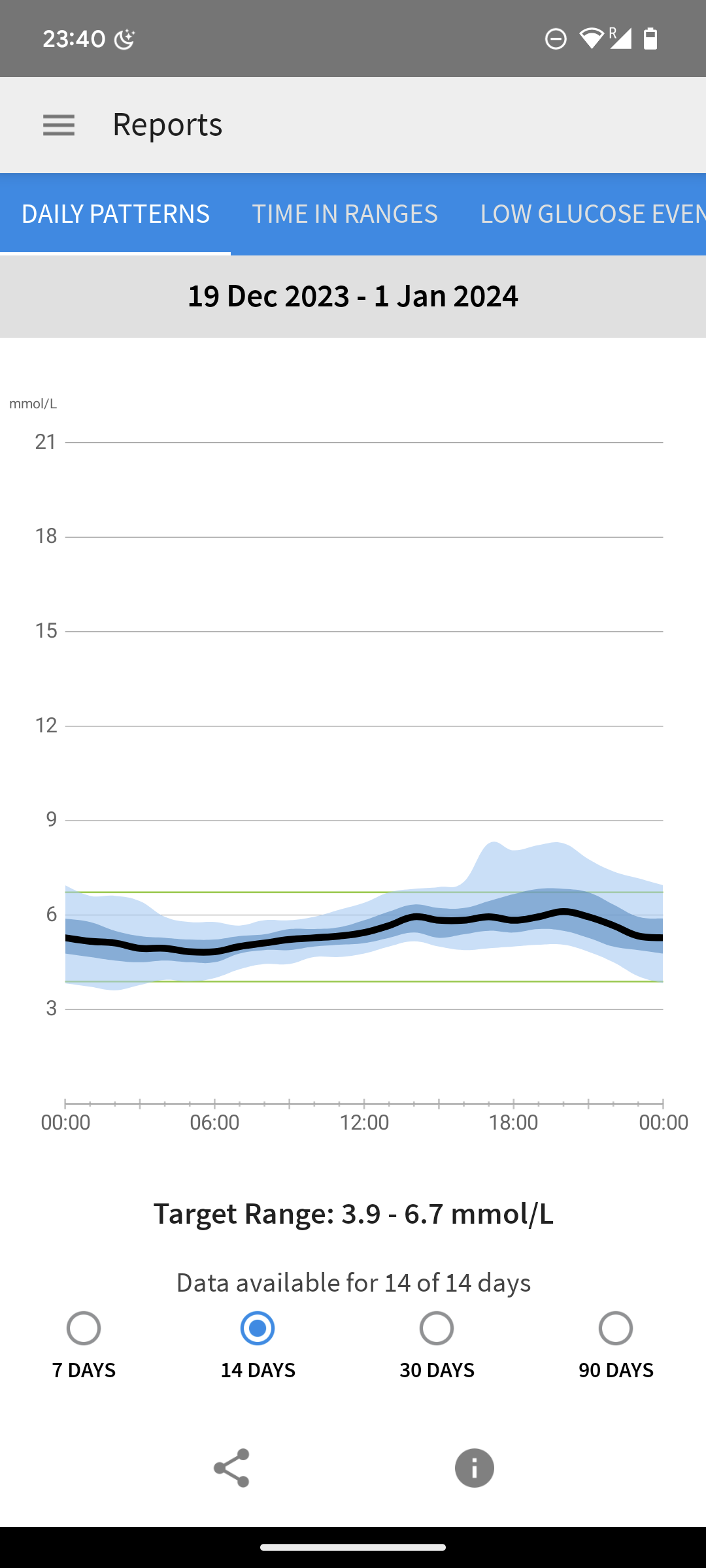We live in a great world. A world where you can stick a needle into your arm, sync it up to your phone, and crush your belief that donuts are good for you. Or in the case of my girlfriend the opposite, but we come to that shortly.
In fact, she was the one who came up with the idea of tracking blood glucose with a CGM (continuous glucose monitor). She gifted me one and so for 14 days we’ve been able to compare our blood glucose levels after every meal, snack, and activity. Normal couple stuff. Here’s what I’ve learned.
No Diabetes in sight
Based on Levels healthy individuals have the following stats:
- Fasting glucose between 4.0-4.7 mmol/L
- Post-meal glucose level of 6.1 mmol/L or lower
- Average glucose of 5.6 mmol/L or lower. Here are my stats:
- Fasting Glucose was ranging between 4.2-5 mmol/L.
- Average glucose of 5.5 mmol/L
- Glucose range
- 79% of the time I was in the green zone
- 19% were post-meal levels above the healthy threshold. Since I did this experiment over Christmas time I’d say solid.
- The 2% low glucose events were most likely measuring errors caused by lying on the sensor during sleep.


My new favorite carbs
Let’s just look at the carb sources ranked from best to worst:
- Lentils
- Beans
- Potatoes
- Pasta
- Rice
- Fruits
- Candy
This is individual for each person and also depends on other factors like the time of day and what you’re eating alongside it. My girlfriend for example ate one whole bag of choco-bons and barely peaked. You can bet that I’ll hear this every time during grocery shopping.
Some hacks to lessen that glucose spike
- Doing some kind of exercise (squats, a walk… doesn’t have to be much) before or after a meal has a significant impact.
- Eating fat and protein first before binging on carbs again lowers the peak by a lot.
- Eating slower and drawing out a meal helps lessen that spike a bit because the glucose hits your blood slower and your body can handle it better.